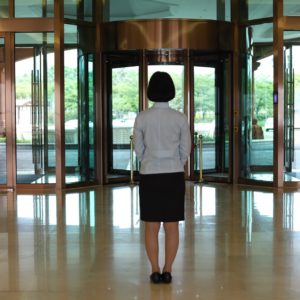Why Coronavirus Should Impact the Way Spas Do Business – Part Two

Part Two– Engagement, Energy, and E-Commerce
“Change is inevitable. Growth is optional.”
-John C. Maxwell
Right now most countries in the Western Hemisphere have not reached the peak of the coronavirus pandemic. We have no idea of what’s to come. What we do know is that directly or indirectly most areas of business will be impacted. Nothing will be as it was before. Smart companies will look ahead and talk about a future that includes diversification, introducing new products and discovering new markets.
Traditionally, spas operated as a treatment center with retail sales as an afterthought, almost a side hustle. Despite that profit model having a litany of challenges and flaws, it has never really evolved for a variety of reasons. Most common is that senior management did not want to invest money into areas of therapist development for which they could not foresee immediate results.
The anomalous spas which operated differently by focusing on staff training, customer engagement and retail sales have been considered oddities. Despite in many cases, their overwhelming financial success – there is little evidence of senior managers adopting the modus operandi of these successful spas to their own operations.
A Management Mindset of Positivity
In my experiences of working with top-earning spas, the owners or senior executives tend to have a different outlook on the services they’re providing.
They recognize that “energy work” is not just a term that is widely used in the spa industry but something real.
Spa may be a business but it is run by and for human beings. By creating an organization focused upon the application of “positive energy through engagement” at all touchpoints, momentum is created that even a crisis like the Covid-19 pandemic can’t completely upend.
This means examining the customer experience – internal and external – from all angles and being committed to delivering the finest service possible. This can only be achieved through some form of training. Staff is not born with this knowledge. Therefore it is a justifiable investment.
But another action that has an immeasurable impact is their own willingness to model the behaviors that they wish to see from their employees. It may mean making more frequent appearances. Not just materializing during the holidays or if some grave operational error has occurred. They acknowledge their employees whenever they see them. Customer service guru, Dr. Bryan Williams calls it the 10 feet / 4 feet rule.
“Basically, if a customer is within 10 feet of you, give eye contact, smile, (at the very least, acknowledge that the customer is alive!). If you are within 4 feet, then you initiate dialogue.”
In the top spa executive’s organizations, spa managers cannot sequester in their offices all day. They must be out on the floor engaging with guests and staff.
A Staff Mindset of Full Service
In Part 1 of this series, we talked about a well-known award-winning spa in the US. Throughout the coronavirus pandemic, the owner and staff remain highly engaged with clients on Facebook and Instagram. The good news is that the entire staff continues to receive pay, largely generated from e-commerce.
In an industry where the majority of spa managers have been challenged by the resistance of their staff to sell retail, these therapists average 35% and higher retail sales to service.
What they are crystal clear about is that they are not salespeople. They see themselves as platinum level service providers and educators. Home-care is simply an organic extension of their service.
The result of this group-think is reflected in their sales earnings and future bookings. Having “trained” their guests into the need for home-care, a solid foundation had already been laid.
At the onset of the pandemic, transitioning to e-commerce was a no-brainer. Product sales tripled.
The big question is: “How do you get to the level of this spa from where you are today?”
Let me give you a clue because you may be tempted to go this route. Simply setting up an e-commerce site is not the answer. Groundwork has to occur first. Let’s work backward. Ask yourself these nine questions:
- Where is your e-mail list of guests, how many are on it?
- When was the last time they received a positive message from your spa?
- What steps have you taken to build relationships with your guests in the past? How?
- What type of engagement and sales training have your therapists received?
- How are you monitoring your spa to ensure a quality guest experience? How frequently?
- How are you acknowledging outstanding therapist or management performance? How often?
- What steps do you take to address nominal or apathetic performance?
- Robust retail sales are a result of high engagement. Is it built into your evaluation process?
- How many social media outlets is your spa engaged on? How many followers do you have?
I have helped guide many world-class spa clients through this internal and external examination of their retail sales process. For senior management, the benefits include a fresh approach to retail sales that factors in the psychological orientation of staff. The return on investment is measurable and dramatic.
In the wake of the coronavirus pandemic, you must consider a new business model for your spa.
Perhaps a Retail Center with an e-commerce backend integrated with spa treatments is ultimately the safest most profitable idea. Your therapists will need to be highly engaged and trained to make this model work. Senior management must also buy-in to creating this specialized spa ecosystem.
In closing, spa e-commerce does not happen in a vacuum. It results from strategic leadership and vision at the top of the spa. This results in optimizing the client journey for retail sales. From the initial touchpoint of online search, social media or wellness tourism to foot traffic and customer bookings there is tremendous potential. The end result is helping the client through holistic marketing which drives increased sales of compelling products.
The bottom line is that for any spa in the world new opportunities exist. The coronavirus pandemic presents a time for your brand to level up. Are you willing to tune in and meet the needs of your customers that will have the greatest impact on sales and loyalty?
Drop me a line. We’ll go further into e-commerce in Part 3.






